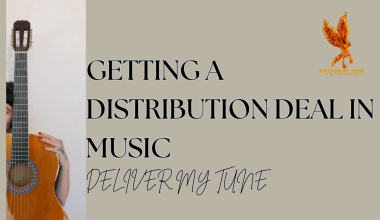When it comes to music licensing, artists often encounter two primary types of agreements: exclusive agreements and non-exclusive agreements. Understanding the nuances between these two can significantly impact an artist’s career, revenue, and control over their music. In this blog, we will dive deep into the differences between exclusive and non-exclusive agreements in music licensing, their benefits, drawbacks, and how to choose the right one for your needs.
What is an Exclusive Agreement?
An exclusive agreement in music licensing means that the artist grants all the rights to a particular piece of music to one party (such as a publisher or a record label) exclusively. This means no other party can use the music without permission from the licensee.
Key Features of Exclusive Agreements
- Single Licensee Control: Only one licensee has the rights to the music.
- Higher Revenue Potential: Often involves higher upfront payments or advances.
- Long-Term Commitment: Usually longer contract durations.
- Comprehensive Rights: Includes various rights such as performance, synchronization, and mechanical rights.
Benefits of Exclusive Agreements
- Higher Financial Security: Artists often receive a substantial upfront payment.
- Strong Partnership: Closer working relationship with the licensee.
- Extensive Promotion: Licensees typically invest more in promoting the music.
- Better Market Positioning: Exclusive tracks often get better placements in high-profile projects.
Drawbacks of Exclusive Agreements
- Limited Flexibility: Artists cannot license the same track to multiple parties.
- Dependence on Licensee: Success is heavily dependent on the efforts of the licensee.
- Potential for Unused Tracks: If the licensee doesn’t use the music, the track remains idle.
- Longer Contractual Obligations: Artists are tied to the contract terms for extended periods.
What is a Non-Exclusive Agreement?
A non-exclusive agreement allows the artist to license the same piece of music to multiple parties. This means that several licensees can use the music simultaneously, each having the right to utilize it under the terms agreed upon.
Key Features of Non-Exclusive Agreements
- Multiple Licensees: The same music can be licensed to several parties.
- Lower Initial Payments: Generally involves smaller upfront payments.
- Shorter Contracts: Typically shorter in duration compared to exclusive agreements.
- Selective Rights: Often covers specific rights like synchronization without encompassing all rights.
Benefits of Non-Exclusive Agreements
- Greater Flexibility: Artists can license their music to multiple clients.
- Increased Exposure: More opportunities for the music to be used in various projects.
- Diversified Revenue Streams: Earnings come from multiple sources.
- Retained Control: Artists maintain more control over their work.
Drawbacks of Non-Exclusive Agreements
- Lower Revenue Per License: Each license might bring in less money compared to an exclusive deal.
- Market Saturation: Risk of the music becoming too common.
- Less Commitment from Licensees: Licensees may not promote the music as aggressively.
- Complicated Management: Managing multiple licenses can be challenging.
How to Choose Between Exclusive and Non-Exclusive Agreements
Choosing between exclusive and non-exclusive agreements depends on several factors, including your career goals, financial needs, and the nature of the music.
Considerations for Exclusive Agreements
- Financial Stability: If you need immediate and substantial financial support, exclusive deals might be better.
- Long-Term Relationships: Ideal for building strong partnerships with a label or publisher.
- High-Value Projects: Suitable for tracks expected to perform exceptionally well in high-profile projects.
Considerations for Non-Exclusive Agreements
- Exposure and Reach: If you aim for wide exposure and diverse usage of your music.
- Control and Flexibility: Perfect for artists who want to retain control over their music.
- Multiple Revenue Streams: Beneficial for artists looking to maximize their income through various sources.
Case Studies: Exclusive vs. Non-Exclusive Agreements
Exclusive Agreement Case Study
Artist: John Doe Track: “In the Night” Agreement Type: Exclusive with a major record label
Outcome: John Doe signed an exclusive agreement for his track “In the Night” with a major record label. The deal included a significant upfront payment and an extensive promotional campaign. The track was featured in a blockbuster movie, gaining massive exposure and leading to substantial royalty earnings. However, John couldn’t license the track to any other project during the contract period.
Non-Exclusive Agreement Case Study
Artist: Jane Smith Track: “Morning Light” Agreement Type: Non-exclusive with multiple independent music libraries
Outcome: Jane Smith licensed her track “Morning Light” to several independent music libraries. This non-exclusive approach allowed her music to be used in various TV shows, advertisements, and online content. While each deal brought in smaller amounts, the cumulative earnings were significant. Jane retained control over her music and continued to license it to new clients.
Practical Tips for Artists
- Read Contracts Thoroughly: Understand every clause before signing.
- Consult a Music Lawyer: Seek professional advice to protect your interests.
- Negotiate Terms: Don’t hesitate to negotiate better terms.
- Understand Your Rights: Know what rights you are giving away and what you retain.
- Monitor Usage: Keep track of how your music is being used.
Exclusive vs. Non-Exclusive Agreements in Music Licensing: A Deeper Dive
Understanding Rights in Music Licensing
In both exclusive and non-exclusive agreements, various rights come into play. These rights determine how and where your music can be used, and by whom. Here’s a breakdown of some critical rights involved in music licensing:
- Synchronization Rights: Allow the music to be used in sync with visual media, such as TV shows, movies, commercials, and video games.
- Mechanical Rights: Pertains to the reproduction of the music, for instance, in CDs, vinyl, or digital downloads.
- Performance Rights: Covers the public performance of the music, whether live or broadcasted.
- Print Rights: Related to the reproduction of sheet music.
The Impact of Licensing on Revenue Streams
The type of agreement you choose can significantly influence your revenue streams.
Exclusive Agreements and Revenue
In exclusive agreements, the licensee typically invests heavily in promoting the music, which can lead to significant revenue through:
- Upfront Payments: Substantial initial payments provide financial security.
- Royalties: Ongoing royalties from various uses of the music.
- Advances: Often, exclusive deals come with advance payments against future royalties.
Non-Exclusive Agreements and Revenue
Non-exclusive agreements might not offer large upfront payments but can provide steady revenue through multiple smaller streams:
- Multiple Licenses: Licensing the same track to various clients can cumulatively lead to significant income.
- Diverse Uses: The music can be used in a variety of contexts, from indie films to online ads, increasing its reach and earning potential.
- Recurring Revenue: Continuous licensing opportunities can create a steady flow of income.
Control and Creative Freedom
Control over your music and creative freedom are crucial aspects to consider.
Exclusive Agreements
- Creative Control: While exclusive deals can limit licensing options, they often come with strong marketing support and higher quality production.
- Licensee Influence: The licensee may have substantial influence over the use of the music, sometimes even over its creative aspects.
Non-Exclusive Agreements
- Creative Freedom: Artists retain more control over how their music is used.
- Multiple Projects: Ability to license the same track to various projects allows for creative diversity.
Legal and Contractual Considerations
Understanding the legal implications and the fine print in both types of agreements is essential.
- Exclusivity Clauses: In exclusive agreements, ensure you understand the extent of exclusivity and any potential limitations.
- Duration of Agreement: Both exclusive and non-exclusive contracts can vary in duration. Know how long you’re committing your music.
- Termination Clauses: Understand the conditions under which the agreement can be terminated.
- Payment Terms: Be clear on how and when you will be paid, and what deductions might apply.
Balancing Risks and Rewards
Risks in Exclusive Agreements
- Dependency: High reliance on the licensee for success.
- Limited Opportunities: Cannot license the same track elsewhere, potentially missing other lucrative opportunities.
- Long-Term Commitment: Being tied to a single contract for an extended period can be risky if the licensee’s efforts don’t meet expectations.
Risks in Non-Exclusive Agreements
- Lower Individual Payments: Each license may bring in less revenue compared to exclusive deals.
- Market Saturation: Over-licensing a track can diminish its value and uniqueness.
- Complex Management: Handling multiple licenses requires careful management and tracking.
Rewards in Exclusive Agreements
- High Financial Gain: Potential for substantial upfront payments and royalties.
- Focused Promotion: Licensee’s focused marketing efforts can significantly boost the track’s success.
- Quality Assurance: Higher production and promotional quality.
Rewards in Non-Exclusive Agreements
- Increased Flexibility: Freedom to license the track to multiple clients.
- Wider Reach: Greater exposure across different platforms and projects.
- Continuous Income: Steady income from diverse sources.
Conclusion: Making the Right Choice
Both exclusive and non-exclusive agreements offer unique benefits and challenges. Your decision should be guided by your career goals, financial needs, and the specific circumstances surrounding each piece of music. By thoroughly understanding the key differences and implications of each type of agreement, you can strategically manage your music career, maximize your revenue, and maintain the desired level of control over your creative work.
Remember, the right choice can propel your music to new heights and open up numerous opportunities for growth and success in the music industry.
For further reading, explore these related articles:
- What is YouTube Content ID?
- What Do We Mean by Exclusive Distribution Rights?
- What is Performance Royalty?
For additional resources on music marketing and distribution, visit Deliver My Tune.





